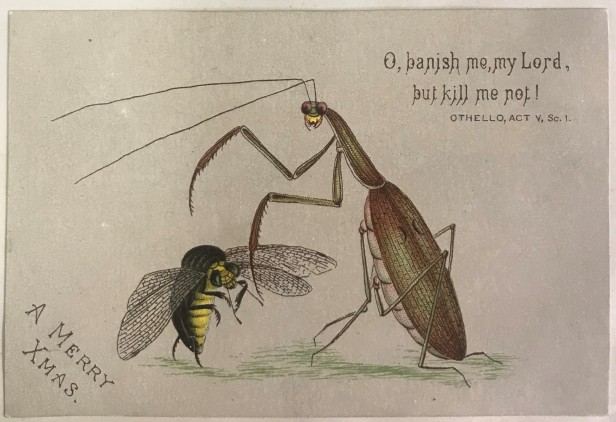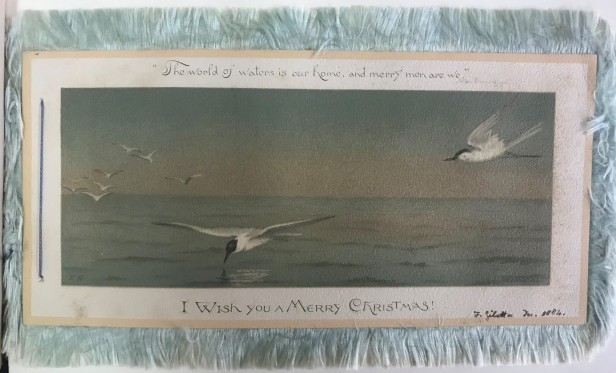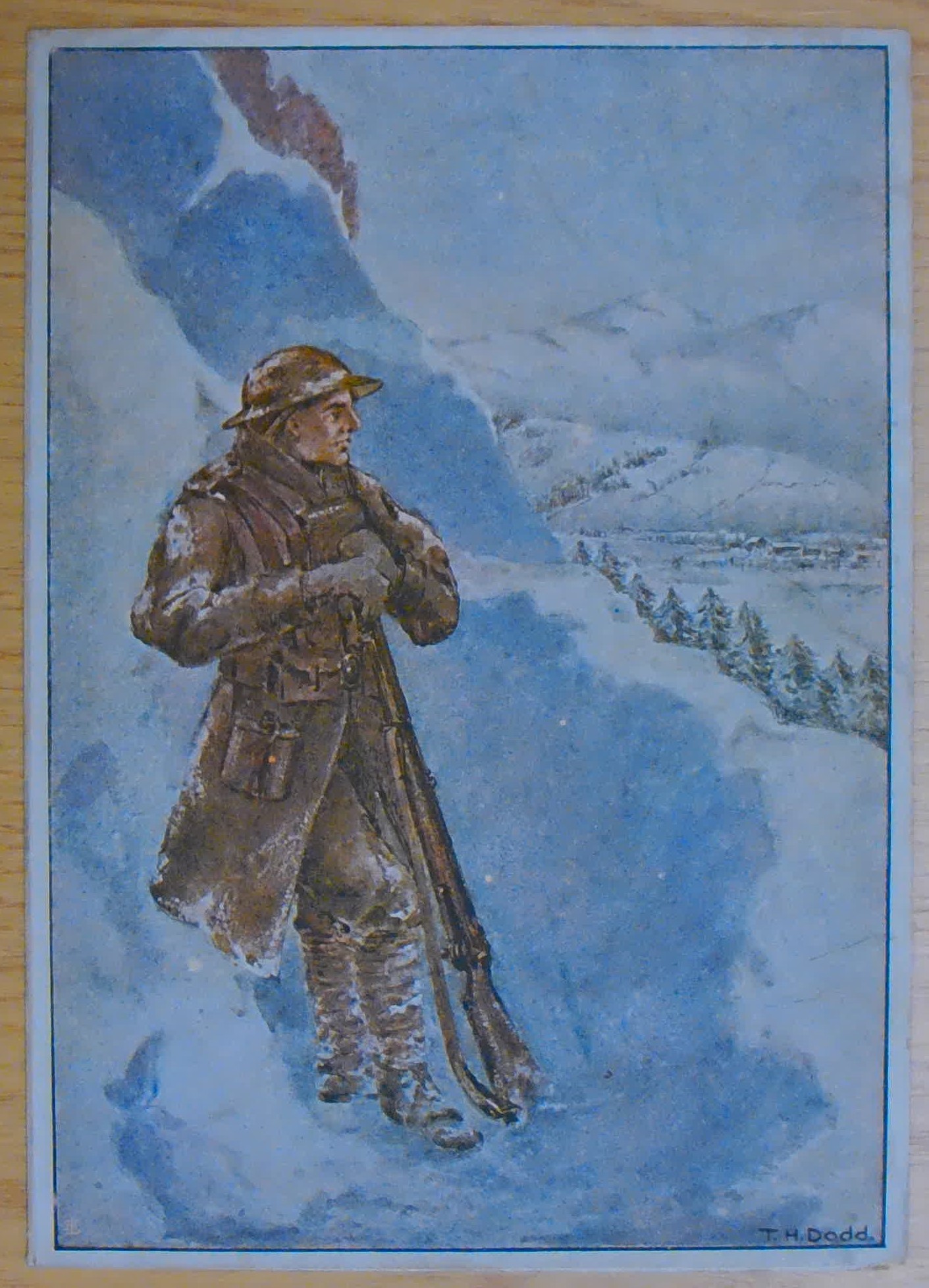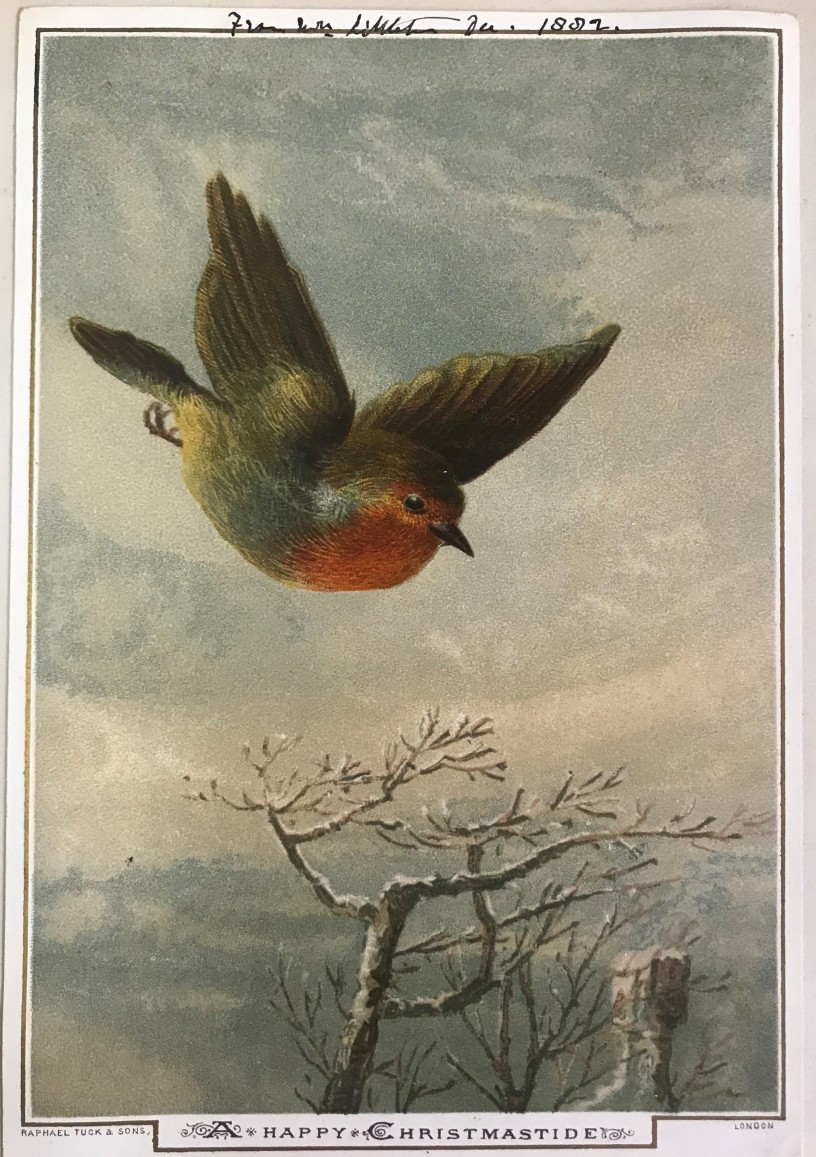Laura Hilton-Smith, Collections Assistant, introduces us to some of the historic Christmas cards in Special Collections.
The first commercial Christmas card was created in 1843 and cards featuring festive imagery and greetings have been a part of our Christmases ever since. There are many Christmas cards within our collections. Some, from the Novello-Cowden Clarke Collection, date back to the Victorian era.
Many of the subjects seen on Christmas cards from the Victorian period will be familiar to modern eyes including holly, mistletoe, ivy and the nativity. Robins also feature regularly on festive greetings cards, after first appearing in 1862 according to some sources. There are several theories as to why robins became so popular on Christmas cards. One is that they were associated with postmen who were dressed in scarlet coats from 1793. The public nicknamed them ‘robins’ and, as the postmen delivered Christmas cards, a link was formed. Other ideas about the popularity of robins include their frequent visits to domestic gardens in the winter and their association with religious legend.

Robins were not the only birds to be used on Christmas cards of the period. Other birds such as wrens, owls and swallows were common, along with geese and turkeys. Although these were often shown roasted of course. In the late 1870s some card makers even added clever little gadgets to their cards that produced a chirping sound when pressed.
Some images might seem a little more unusual today such as these insects from c.1882.

Victorian Christmas cards often included references and images which seem odd to our modern eyes. For example, pictures of dead game birds or joints of raw meat would seem a little morbid to us but represented the Christmas feast and good cheer to their Victorian audience.
Fringed cards, such as this one featuring terns flying over a wintery sea from c.1884, were fashionable in the 1880s.

Other trends of the time included scalloped edges, tassels and silk bows. Padded cushion cards were popular in the later 1860s and 70s. Similar to some Valentine’s cards of the time they featured a pad of cotton wool or tissue that could be scented with perfume.


World War I, and wartime in general, saw a big increase in the sending of Christmas cards as people were often separated from their loved ones and spent the festive period in difficult and dangerous situations. Many cards featured snow-covered scenes from the front or cartoon caricatures of life in the camps like these from the Liddle Collection.

Wartime saw a slight increase in religious imagery on Christmas cards. This type of card was less popular in the Victorian era than you might imagine, possibly because sending cards was then associated with the social side of festivities rather than religious traditions.
Christmas cards continue to reflect our social and cultural preoccupations and remain a valued way of sending best wishes to family and friends at this time of year.

